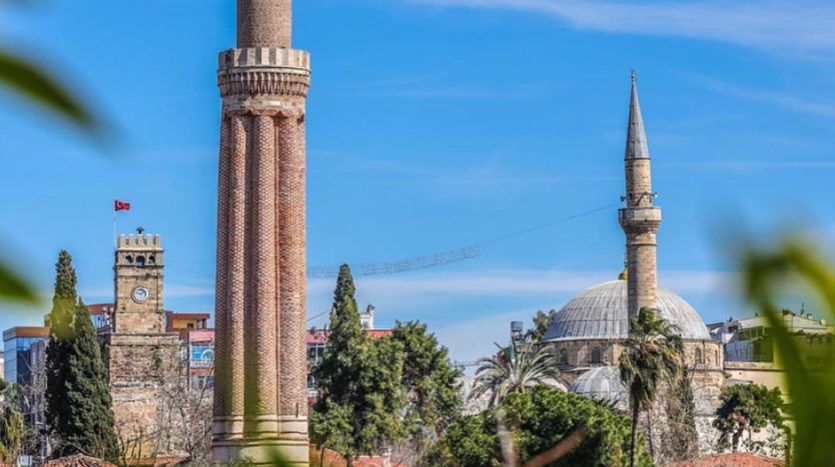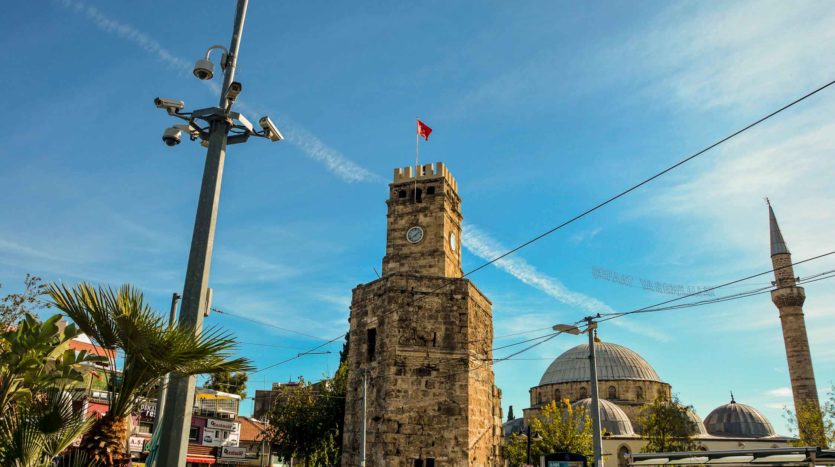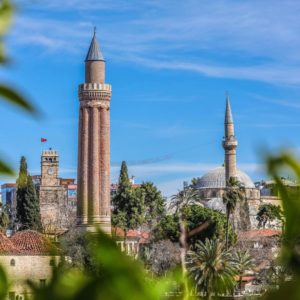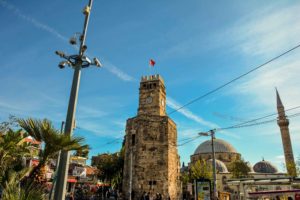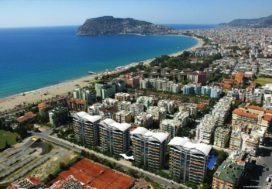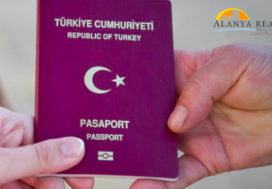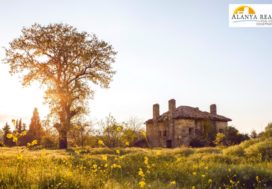Muratpasha district Antalya
To get to know the Muratpasha neighborhood of Antalya, we recommend you to read this article.
District was established on 22 March 2008. After the end of the Pergamon Kingdom (133 BC), the city remained independent for a while, and then came into the hands of pirates. In 77 BC, Commander Servilius Isauricus joined the Roman territory. B.C. In 67, it became the base for Pompeius’ navy. A.D. Hadrianus visited Attaleia in 130, which enabled the development of the city. Since the modern city is built on the ancient settlement, the ruins of antiquity are rarely seen in Antalya. The first of the ruins that can be seen is a part of the harbor breakwater, which is known as the old harbor, and the wall surrounding the harbor.
Apartment In Avsallar
Hadrian’s Gate, which was restored on the outside of the park, is one of the most beautiful antiquities in Antalya.
Antalya City Walls During the Hellenistic period, the city walls surrounded the theater-planned city. It was fortified with a second fortification and ditch during the Byzantine period.
The first walls of Antalya II. It is known to have been built at the time of Attalos. A.D. In 130, the Roman emperor Hadrianus had the ‘Hadrianus Gate’ built during the Antalya campaign and repaired the eastern part of the walls. Antalya, M.S. From 395 onwards, it became a busy port especially in the Mediterranean trade. The city, which was subjected to Arab raids starting from the seventh century, was conquered by the Abbasid caliph Mutawekkil, commander Fazil bin Karin in 860.
Byzantine emperor VI. During the reign of Leon and his son Constantine Porphrogenetos (M.S. 912-914), it is known that the walls were restored. During this period, the walls were surrounded by a second wall and a ditch outside the wall.
The old city of Antalya was protected by two walls, one in the form of horses and one in the sea and one in the land. There were also walls separating the urban settlements. There were towers on the outer walls with a large number of fifty step intervals. The history of the city walls of Antalya dates back to ancient times. It was generally built by the Romans on the foundations of the Hellenistic period and was extended or repaired during the Seljuk period. Stone blocks with many antique features were used in the walls. Until the end of the 19th century, almost all were preserved.
Today, only some bastions in the city, Hadrian’s Gate, Clock Tower, Hıdırlık Tower and some wall remains remain.
Geographical structure:
Muratpasha is located in southwest Turkey in the Mediterranean region between 30-31 degrees longitude and 36-37 degrees latitude. Muratpasha is surrounded by Aksu District in the East, Kepez District in the North, Konyaaltı District in the West and Mediterranean Sea in the South. The district center of Muratpasha is located on an area of 8804 hectares on the Mediterranean coast. The district has an area of 92 km2. coastline has coastline.
Kas Mediterranean Delight in Turkey
Climate and Vegetation of Muratpasha
Since the Mediterranean climate prevails in our district, the summers are hot and dry and the winters are warm and rainy.
In connection with the climate, plants in the plains often dry out in the summer. The mountains are covered with heat-resistant scrub, pine and other vegetation.
Drinking water of Muratpasha, which originates from Saklıkent and Kırkguz, is of high quality.
Property In Gaziosmanpasa Istanbul
TOURİSTİC PLACES OF Muratpasha
Muratpasha Mosque:
It is on Kazım Özalp Street outside the city walls. It was built in 1570 by Grand Vizier Kuyucu Muratpasha. The ten-sided pulley is covered with a high dome. The columns of the last congregation with pointed arches and three domes are decorated with colored stones. Antalya Muratpasha neighborhood, our district’s name was taken from this mosque in the square in the bazaar.
Kaleici:
A large part of the destroyed and destroyed horseshoe is surrounded by walls inside and outside. Walls, Hellenistic, Roman, Byzantine, Seljuk and Ottoman periods are common work. The walls have 80 signs. There are about 3,000 houses with tiled roofs inside the walls. The characteristic structures of the houses not only give an idea about the architectural history of Antalya, but also reflect the lifestyle, traditions and customs in the region in the best way. In 1972, the inner harbor of Antalya and the Kaleici district were taken under protection by the High Council of Real Estate Antiquities and Monuments as a protected area. FİJET (International Association of Tourism Writers) awarded the Golden Apple Tourism Oscar on April 28, 1984 for the restoration of the Antalya-Kaleici Complex. Today, Kaleici has become an entertainment center with hotels, pensions, restaurants and bars.
Old Antalya Houses:
In Antalya, where summers are very hot and winters are mild, the importance of preventing the sun and providing coolness has been given more importance in the construction of old houses. Shaded stony and courtyards are features that facilitate air flow. It is built on three floors with its entrance which serves as a warehouse and hall.
Grooved Minaret / Yivli Minare:
It is the first Turkish structure of Antalya. In the center is near the harbor. It was built during the reign of the Anatolian Seljuk Sultan Alaeddin Keykubat (1219-1236). The body, built with bricks, consists of eight half-cylinders. If there is a mosque adjacent to this minaret, it must have been demolished. Because the mosque next to the minaret later circuit, 1372 belongs to. It was built during the time of Hamitoğulları, a Turkish principality by an architect named Tavasi Balaban.
Clock Tower and Broken Minaret / saat kulesi ve kesik minare:
Antalya began to get closer in the centuries with the city center. The legacy of Rome and Byzantium is enriched with Seljuk, Ottoman and contemporary examples. While it was a Roman temple, the church, then the minaret turned into a mosque, the minaret of the 2,000-year-old lighthouse Hıdırlık tower and clock tower rising to the bastions. Also known as the Great Mosque. It was originally built in the 5th century as a basilica. Very few parts of the first work have survived and have undergone changes in the Byzantine period. The work was repaired during the Ottomans, some of them were used as Mevle-vihane and then opened as a mosque.
Cliffs / falezler:
The cliffs descend from 14 meters to 25 meters depth, depending on the location. Subsequently, the bottom structure is replaced by sandy and shaft layers. Therefore, interesting points are around the first 20 meters. Going further is like wandering the desert.
One of the preferred places for ease of entry is below the variant going down to Konyaalti beach. In this region, the rocky section descends to 25 meters and makes it possible to see the cliffs and the living life under the water.
Three Doors / üç kapılar:
The only gate that remained intact with the two towers next to them is Üçkapılar (also known as Hadrianus Gate), the most beautiful gate of Pamphylia. A.D. The door, which was built in honor of the arrival of im-parator Hadrianus in Antalya in 130, was made entirely of white marble, except for its columns. The carving and reliefs are outstanding.
Benefits of Istanbul’s New Third Airport
Antalya Museum:
The establishment and development of the Antalya Museum is quite interesting. On March 28, 1919, Antalya was occupied by the Italians. The archaeologist, who came with the occupation forces, toured the region, gathered the antique artifacts they found and began to transport them to the Italian Consulate. In the meantime, interested in the history of Antalya and archaeological high school teacher Suleyman Fikri Bey, loves collecting historical artifacts on behalf of the civilization of those who opposed the Italian movement. He laid a foundation for the Antalya Museum by organizing a small abandoned mosque next to the Tekeli Mehmet Pasha Mosque. Later, when the Italians withdrew from Antalya, they brought their works to this small museum.
After 1937, the Yivli Minaret Mosque was used as a museum. Excavations in the region found new works. The ruins of ancient civilizations were unearthed on one earth and exhibited. Today Kepez in the street and a contemporary approach has organized 13 exhibition halls in Antalya, Turkey’s largest museum, one of the museums and open-air gallery. The museum occupies an area of 7,000 square meters and the number of works exhibited is about 5,000. 25.000 – 30.000 works are preserved without being exhibited in the museum.
.




